Gum Grafting Surgery
Benefits of Gum Grafting Surgery
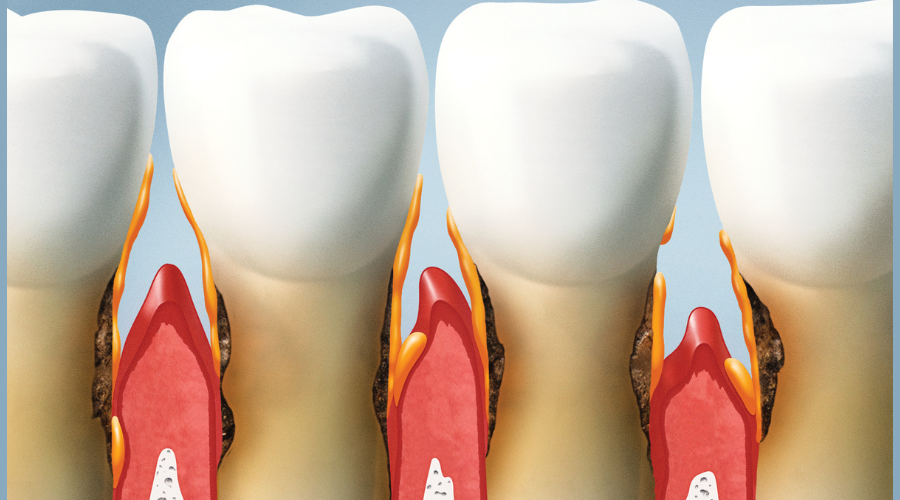
gum Grafting is a crucial aspect of overall oral hygiene. Yet, it’s often overlooked until problems arise.
One such issue is receding gums. This condition can lead to tooth sensitivity, increased risk of decay, and aesthetic concerns.
But there’s a solution: gum grafting surgery. This procedure can restore your gum line, protect your teeth, and enhance your smile.
In this article, we’ll delve into the benefits of gum grafting surgery. We’ll cover everything from the procedure itself to recovery and cost considerations.
Whether you’re considering the surgery or simply want to learn more about maintaining gum health, this guide is for you.
Stay tuned as we explore the world of gum grafting surgery, and how it could be the key to a healthier, more confident smile.
Understanding Gum Grafting Surgery
Gum grafting surgery, also known as gingival graft or periodontal plastic surgery, is a procedure that aims to correct the effects of gum recession. It’s a common treatment that can be performed by a periodontist or an oral surgeon.
The surgery involves taking gum tissue from another part of your mouth (usually the palate) or using a synthetic material. This tissue is then attached to the areas where the gums have receded.
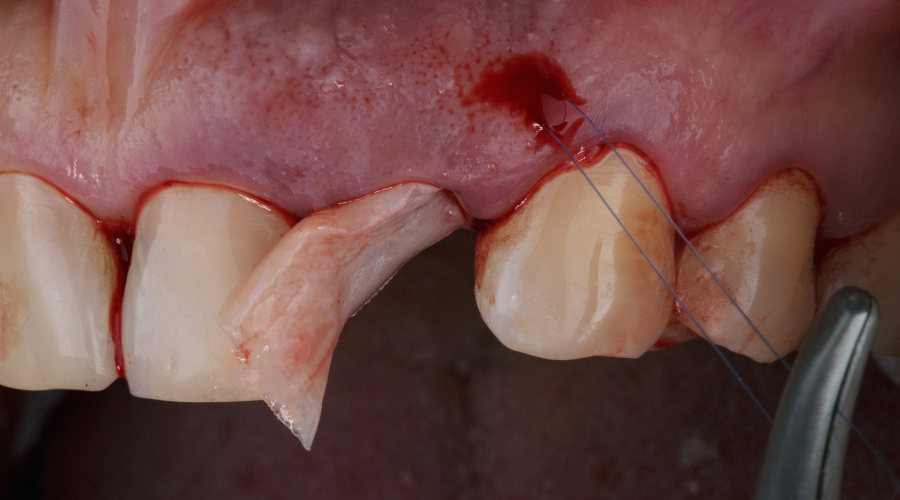
What is Gum Grafting?
Gum grafting is a surgical procedure that aims to cover exposed tooth roots due to gum recession. It involves transplanting a small amount of gum tissue to the affected area.
The transplanted tissue helps to reinforce thin gums or fill in areas where gums have receded. This can protect the exposed roots, reduce sensitivity, and improve the appearance of your smile.
Why Might You Need Gum Grafting?
Gum recession is the main reason why you might need gum grafting. Recession can occur due to various factors, including aggressive tooth brushing, gum disease, or simply aging.
When gums recede, they leave the roots of your teeth exposed. This can lead to sensitivity, especially when eating or drinking hot or cold items. It can also increase the risk of decay, infection, and even tooth loss. Gum grafting surgery can help mitigate these risks and improve your oral health.
The Benefits of Gum Grafting (greffe de gencive)
Gum grafting surgery offers several benefits, both functional and aesthetic. It’s a versatile procedure that can address a range of dental health issues.
The primary benefits of gum grafting include:
- Improved dental health
- Aesthetic enhancements
- Increased comfort and reduced sensitivity
Improved Dental Health
Gum grafting can significantly improve your dental health. By covering exposed roots, it helps protect your teeth from decay and abrasion.
Moreover, it can prevent further gum recession and bone loss. This is crucial in maintaining the overall health of your teeth and gums.
Aesthetic Enhancements greffe de gencive
In addition to its health benefits, gum grafting can also enhance the aesthetics of your smile. Receding gums can make your teeth look longer than normal, affecting the symmetry of your smile.
Gum grafting can help restore this balance, giving you a more youthful and healthier-looking smile.
Increased Comfort and Reduced Sensitivity greffe de gencive
Exposed roots can cause discomfort and sensitivity to hot or cold foods and drinks. By covering these roots, gum grafting can significantly reduce this sensitivity.
This means you can enjoy your favorite foods and drinks without discomfort, improving your overall quality of life.
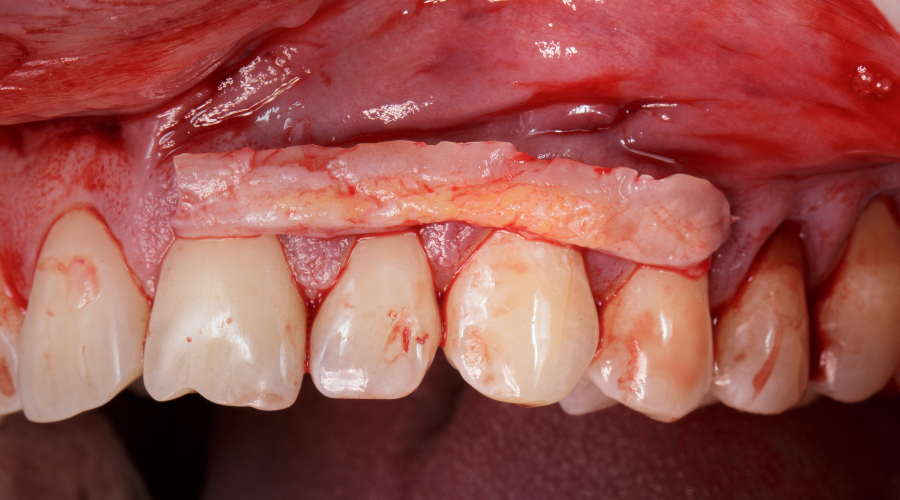
Types of Gum Grafts greffe de gencive
There are three main types of gum grafts: connective-tissue grafts, free gingival grafts, and pedicle grafts. The choice of graft depends on your individual needs and the extent of gum recession.
- Connective-Tissue Grafts
- Free Gingival Grafts
- Pedicle Grafts
Connective-Tissue Grafts
Connective-tissue grafts are the most common type of gum graft. In this procedure, a flap of skin is cut at the roof of your mouth (palate) and tissue from underneath the flap, known as subepithelial connective tissue, is removed.
This tissue is then stitched to the gum tissue surrounding the exposed root. After the connective tissue has been removed, the flap is stitched back down.
Free Gingival Grafts greffe de gencive
Free gingival grafts involve the direct removal of a small amount of tissue from the palate. This tissue is then attached to the gum area being treated.
This method is often used in cases where thin gums need to be enlarged. It’s also a preferred method when the goal is to prevent further recession rather than cover exposed roots.
Pedicle Grafts
Pedicle grafts involve creating a flap, called a pedicle, on your existing gum tissue. The pedicle is partially cut away so that one edge remains attached.
This gum is then pulled over or down to cover the exposed root and sewn into place. This method can only be done in people who have plenty of gum tissue near the tooth.
The Procedure: What to Expect
Gum grafting surgery is a routine outpatient procedure. It’s performed under local anesthesia, so you won’t feel any pain during the surgery. The entire process usually takes about 1 to 2 hours.
Before the Surgery
Before the surgery, your periodontist will conduct a thorough examination. This includes reviewing your medical history and taking X-rays. You’ll also discuss the type of graft that will be used.
During the Surgery
During the surgery, the periodontist will make a small incision in your gum tissue. The graft, either from your palate or a donor, is then inserted into this space. The graft is carefully stitched into place.
After the Surgery
After the surgery, you’ll be given instructions for post-operative care. This includes dietary recommendations and oral hygiene practices. You’ll also schedule a follow-up appointment to monitor the healing process.
Recovery and Aftercare
Recovery from gum grafting surgery is generally swift. Most patients return to their normal activities within a week. However, it’s crucial to follow your periodontist’s aftercare instructions to ensure optimal healing.
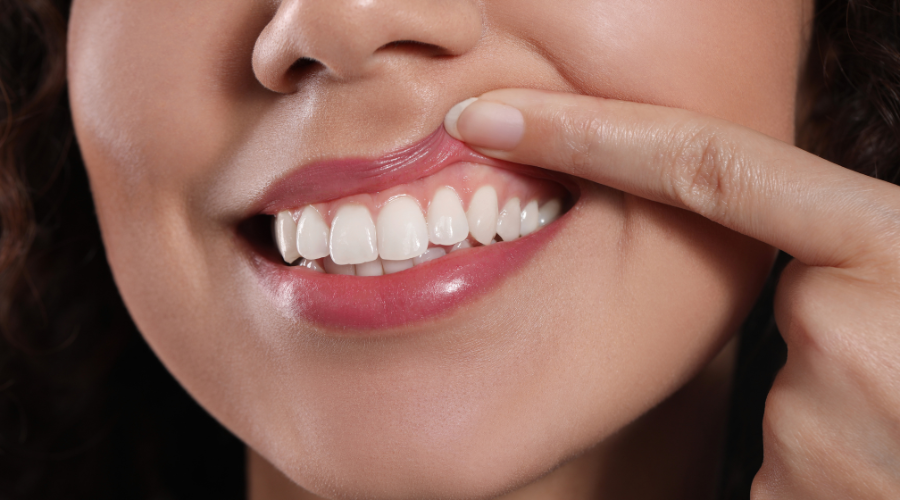
The First Week Post-Op
In the first week post-op, you may experience mild discomfort and swelling. Over-the-counter pain relievers and ice packs can help manage these symptoms. It’s also important to stick to a soft food diet to avoid disturbing the graft.
Long-Term Care for Your Gums
Long-term care for your gums is essential to maintain the benefits of the graft. This includes regular brushing and flossing, as well as routine dental check-ups. Your periodontist may also recommend specific oral hygiene products to support gum health.
Cost and Considerations
The cost of gum grafting surgery can vary widely. It depends on factors such as the type of graft used and the number of teeth involved. On average, you can expect to pay between $200 and $1200 per tooth.
How Much Does Gum Grafting Surgery Cost?
The price of a gum graft can be influenced by the complexity of the procedure. For instance, a connective-tissue graft might cost more than a free gingival graft. It’s best to discuss the cost with your periodontist during the consultation.
Insurance and Financing Options
Many dental insurance plans cover a portion of the cost for medically necessary gum grafting. If you don’t have insurance, some dental offices offer financing options. It’s important to understand your financial responsibility before proceeding with the surgery.
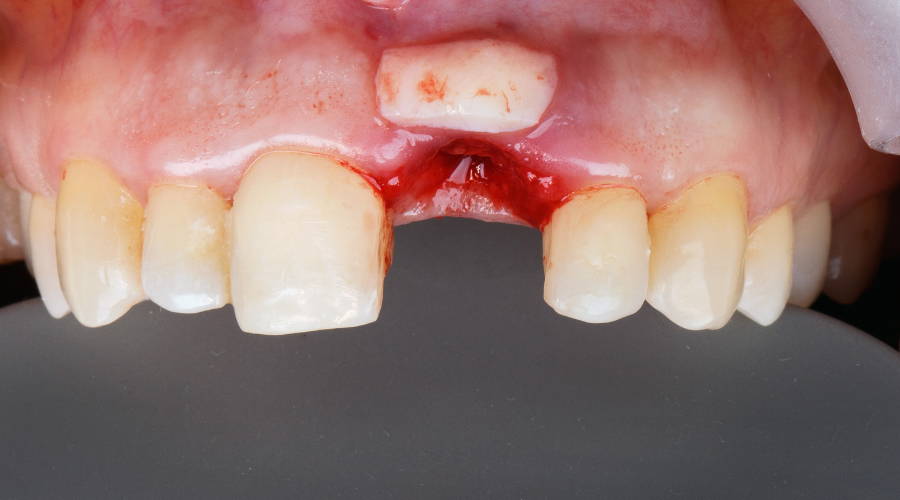
Success Rates and Patient Satisfaction
Gum grafting surgery has a high success rate when performed by experienced professionals. Most patients report significant improvements in gum health and aesthetics. However, individual results can vary based on factors such as oral hygiene and overall health.
What Determines the Success of a Gum Graft?
The success of a gum graft largely depends on the patient’s commitment to post-operative care. This includes maintaining good oral hygiene and following the dentist’s instructions. Additionally, the skill and experience of the periodontist play a crucial role in the procedure’s success.
Real Patient Experiences (greffe de gencive avis)
Patient testimonials can provide valuable insight into the gum grafting experience. Many patients report reduced tooth sensitivity and improved comfort after the surgery. However, it’s important to remember that each person’s experience is unique. Always consult with a dental professional for personalized advice.
Conclusion and Next Steps
Gum grafting surgery offers a viable solution for those suffering from receding gums. It not only improves oral health but also enhances the aesthetics of your smile.
Scheduling a Consultation
If you’re considering gum grafting, scheduling a consultation with a dental professional is the first step. They can provide personalized advice based on your oral health condition and needs.
Embracing a Healthier Smile
Embrace the benefits of a healthier smile with gum grafting surgery. Remember, maintaining good oral hygiene post-surgery is crucial for long-term success.